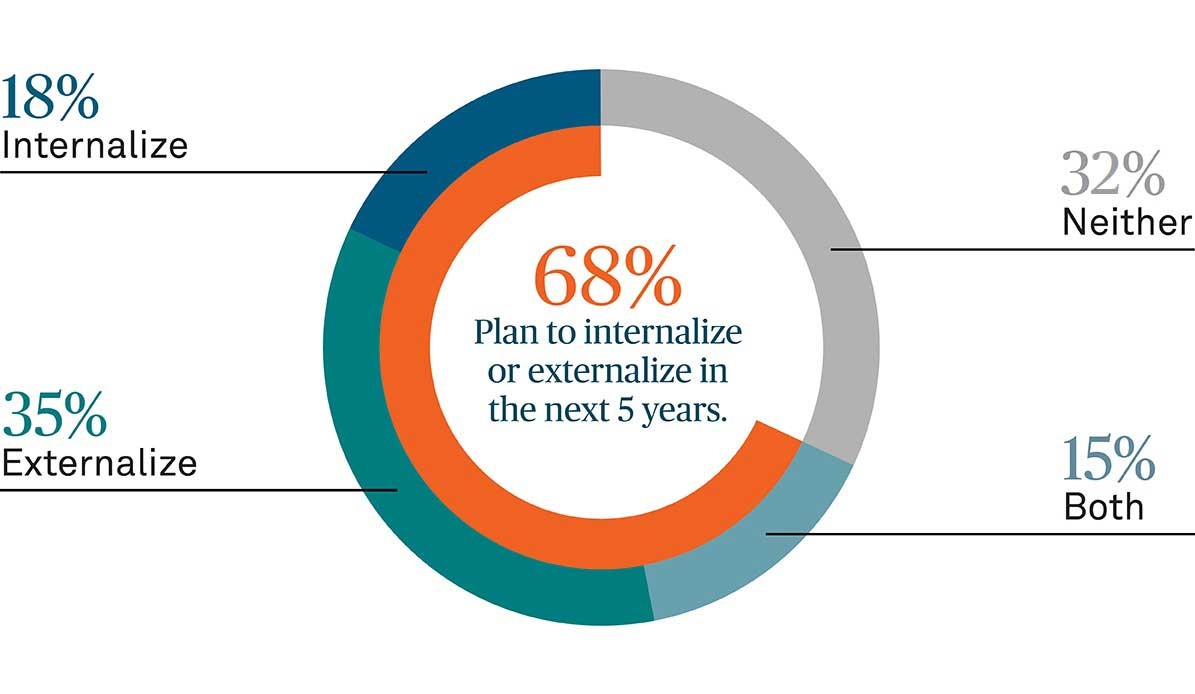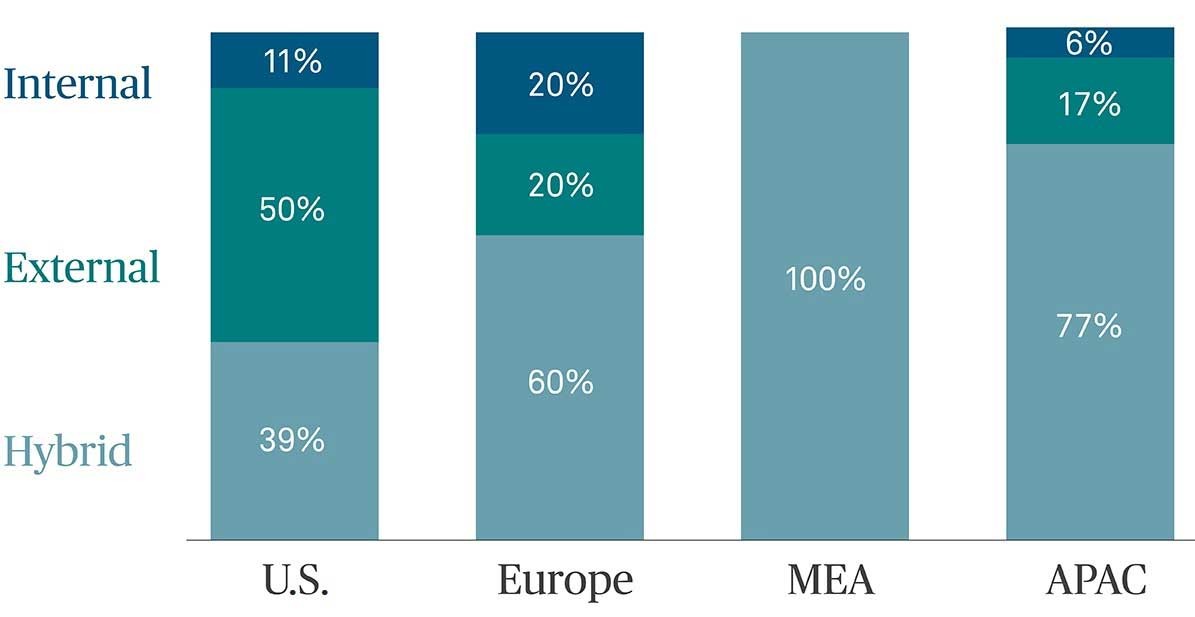2. Share expertise amongst peers
Anecdotal evidence suggests that asset owners are increasingly interested in engaging with peers to learn from each other’s experiences and share best practices. For example, BNY Mellon has recently helped facilitate a discussion between a European and African central bank in regard to insourcing equity investments; another example are client roundtables to discuss front-to-back execution options to comply with new Defined Contribution pension law reform in the Netherlands.
These peer discussions, organized by a custodian or bilaterally, are conducted in a spirit of selfless knowledge sharing, aided by asset owners’ not-for-profit mission. They are an effective means to learn fast, avoid common mistakes, and augment investment outcomes.
Peer-to-peer partnership may increasingly extend to investment expertise too. Private markets, in particular, lend themselves to shared investment expertise because of the difficulty in acquiring requisite expertise and/or the often-constrained availability of investment options locally. There have been notable recent examples of co-investments, with the trend expected to continue (e.g., APG from the Netherlands and GIC from Singapore co-invested in a European hospitality business1; the GLIL infrastructure fund in the U.K. is a collaboration between public pension funds, including LPPI2).
3. Attract diverse talent
In certain countries, asset owners are considered national champions of the local investment industry. This is a great gift that has enabled asset owners to compete with the private sector in attracting leading investment talent. The focus on insourcing investment expertise to foster local knowledge and boost domestic growth is understandable and has proven successful in many cases.
At the same time, the range of skills required by asset owners has expanded. They now need ESG experts, data-driven middle-office professionals and managers adept at building relationships with partner institutions. These skills have arguably been underpromoted in the past, but asset owners now find themselves competing for talent with many industries, including technology and consumer enterprises. A further focus on attracting diverse talent has become indispensable to achieve target outcomes.
Collaboration is Key
There is no single optimal model for portfolio management in the pursuit of investment goals. In all cases, however, asset owners must ensure that their chosen investment model is underpinned by a suitable operating model that delivers performance targets at a reasonable cost with appropriate governance and controls. This will include rethinking IT and systems architecture, data management, (cyber)security and asset safety, as well as analytics and reporting tools.
To achieve this complex task, asset owners should harness the full power and network of their strategic service providers, in particular their custodian.











